

Silk is a natural protein fiber that is woven into an assortment of textiles. Fabrics in this category have a luxurious feel, and every type of silk fabric has exceptional features that determine the use and longevity of the textile. Natural silk is costly as the production process is lengthy and tasking for producing the different variations available in stores. Virtual shopping sites like Amazon are among the reputable websites where one can buy any silk they want.
According to reviews, charmeuse is the most sought-after variety of silk because it has both shiny and matte surfaces and an array of other desirable features. The country of origin, weaving techniques, and the quality of silk threads are some of the factors that we focus on as we discuss silk and the various alternatives that one can buy for different projects. Choosing silk fabrics can be a hard nut to crack, which is why one should familiarize with the varieties available before placing an order.
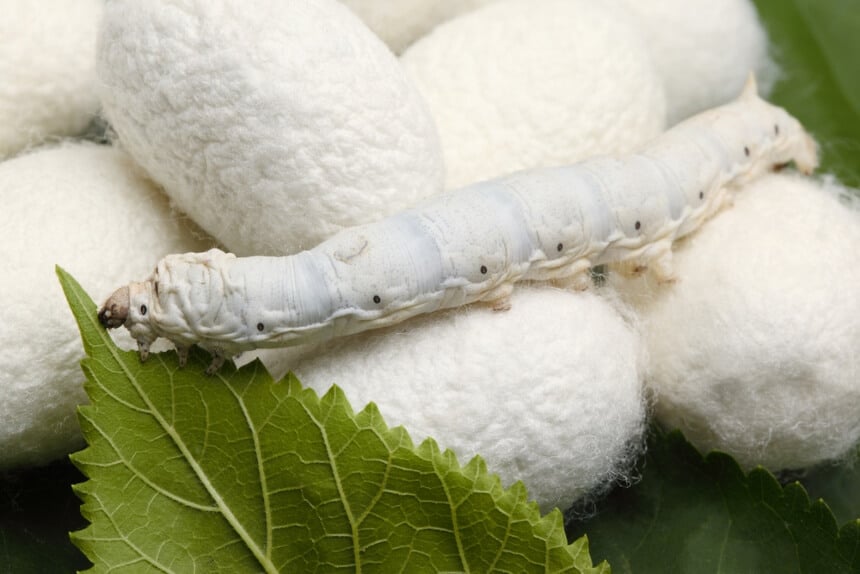
The process of harvesting the silk fiber from the cocoon kills the larva. Boiling is an essential step before the harvesting begins to kill the silkworms to reduce the chances of the insect releasing enzymes to create a hole in the cocoon. They are destructive to the silk fibers, which form a protective layer for the larva to go through the pupal stage undisturbed.
China, South Asia, and Europe are among the regions of the world where the production of silk has been since the ancient civilizations. Wild silk was spun in these areas in small quantities. The first silk fabric was produced in Neolithic China, and it was a sustenance type of farming that small farmers relied on for livelihood. The weaving methods improved with time, which propelled the popularity of Chinese silk in the ancient kingdoms. According to folklore from this region, Empress His Ling Shi accidentally discovered silk as a cocoon fell in her cup of tea and began to unravel.
The farmers stopped relying on wild worms for silk and domesticated some of the species we have today as the source of this type of fabric. The weavers were mostly women who perfected their craft, with each wake improving the quality of silk fabric that came into the market. With time, other civilizations became aware of the fabric and production of the same spread to other parts of the world. Silk is one of the expensive fabrics in the market from time immemorial. This fact has not changed in the contemporary world despite the technological advancements in the sector that have made production more straightforward and faster. World War 2 disrupted the growing industry leading to the development of synthetic fibers such as nylon. This, however, did not stop the production of silk entirely.
All fabrics have pros and cons that one must be aware of before using them in garment construction or any other application. Silk has numerous applications, and it is vital for one to know the advantages of the fabric when interacting with finished products that utilize this textile. Here are some of the advantages of silk.
Silk can absorb up to 30% of its weight without getting damp. The fabric also dries up fast. It is a breathable fabric that guarantees the user comfort at all times. The moisture-wicking capabilities of the different fabric types inform the use of silk for items that require drying quickly or absorb moisture without getting heavy and damp.
Fabrics in this family are mildew and moth-resistant. This makes care and storage more manageable as one does not have to put measures in place to keep moths and mildew away from the fabric. This ensures that items made from silk have a longer lifespan. The fiber source is what makes the fabric have this feature. Plant fiber fabrics are prone to mildew staining, and they also attract moths.
Silk is among fabrics that do not attract dust, mites, or any fungus. Additionally, it does not contain static charges. People with allergies can use silk garments without a worry in the world as it will not affect them in any way. Fabrics in this category are the best choice for making sleeping headgear as it reduces hair breakage significantly. Silk has numerous other benefits that we do not discuss here. Before buying any silk item, the consumer should confirm whether it is a natural or a synthetic alternative. The artificial option does not have the same properties as the natural silk, which will be evident during the garment construction phase.
Weaving methods, country of origin, and production processes are some of the factors that determine the results. Here are the types of silk that one is likely to come across.

The fabric is also durable and mostly used for the production of luxurious silk goods. Mulberry silk is unique since it cannot be replicated.
Tussah silkworms are the source of the fibers that are spun to make this fabric, which features a golden color with varying shades. It can be pale cream or a dark rich brown color. This characteristic of tussah silk has pushed for its popularity in different parts of the globe. It has many applications that cut across different industries. The garment construction industry is among those that use large quantities of tussah silk every year. Combining this fabric with wool and polyester is common. The blend is perfect for making jackets, shawls, painting canvas, and scarves, among other items. In the home, tussah silk is found in interior décor furnishings, upholstery, and bedding.
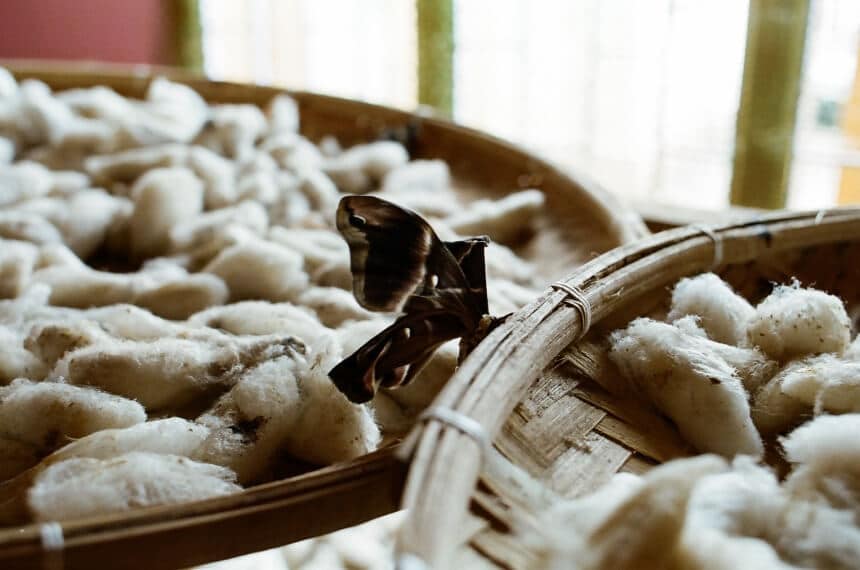
Eri silk has thermal properties making it a suitable pick for the making of cold-weather clothes and shawls for both men and women. Bedspreads made from eri silk are also available in the market.
Muga silk is the most durable alternative to this kind of fabric. It originates from the Assam region in India, which is famous for sericulture and silk production. This silk has a shimmering golden tint and a glossy surface. It was a silk variation reserved for royalty in the ancient civilizations, but it is available for everyone. Dyeing this silk variation is possible after the bleaching process, but most people prefer the natural yellowish hue. The pricing for Muga silk is on the higher side, and most people may not afford this fabric. Mulberry silk is the costliest variation of silk, with Muga coming in next. The production process and quality inform the price of this silk fabric.

The silk types we discussed above are used in making a host of fabrics. Before buying any of the alternatives, one should make sure that they have the necessary tools for handling silk. The sewing machine should have the necessary adjustments to allow them to work with silk. This material is mostly available in light and medium weight options. Below we dive deep into the intricate details of the fabrics and their applications.
This is a lightweight silk fabric constructed using the satin weave ideal for lingerie and evening gown construction. The fabric has a smooth glossy finish on the front, while the back is dull. The synthetic duplicate regarding the texture for this variation is polyester. This fabric drapes effortlessly, but it is problematic when sewing it due to its tendency to pucker at the seams. It also frays easily during cutting and pinning, limiting its uses by a wide margin. Having the correct tools for the process, such as rotary cutters and a sturdy workstation, will make the design process more manageable. The slippery nature of this fabric also makes sewing a problem as it can easily slip through the presser’s foot. It is a delicate and soft fabric with good insulating qualities. One has to be careful when using sewing pins as they will make holes in the fabric.
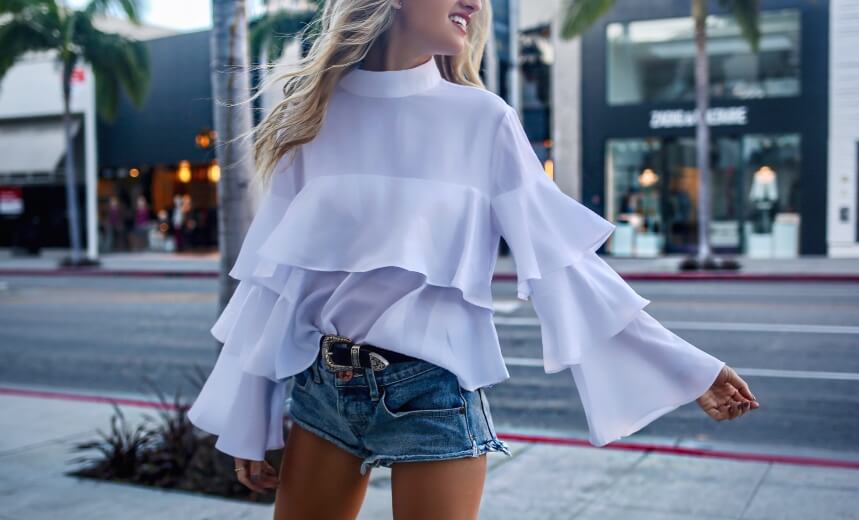
This is another silk fabric kind that has a plain weave construction. It is a smooth silk fiber that drapes well. The matte surface and muted luster are among the desirable qualities that draw people to this silk fabric variation. It has a crepe texture, but this feature is not amplified so much. This breathable fabric is ideal for making summer clothes, evening wear, and bridal dresses.
The wrinkle-resistant nature of crêpe-de-chine is the one characteristic that people use to distinguish the real from the initiations that have flooded the market. The highly twisted fibers make this fabric and purely silk. This ensures that the fabric is strong and durable.
Shantung silk is made using the tussah fiber. The fabric is available in light and medium weight density. Irregular threads are used in the weaving process resulting in a rough texture. Some manufacturers alternate the warp and weft threads to create exciting patterns and colors for a more ornamental feel. The applications of shantung silk are numerous, with most of them being in the clothing industry for the lightweight alternatives of the fabric. The medium-weight picks are suitable for upholstery and other home furnishing items. This type of silk has similarities to the dupioni variation, and it is easy for someone to confuse the two.
Taffeta is smooth and crisp. Plain weaving is the technique that producers of this kind of fabric used to get the desired texture and gloss. This fabric creases easily, which is most people tend to avoid using the same for garment construction. However, this characteristic of taffeta does not limit its application in the same industry. Cloth manufacturers use taffeta for dresses, jackets, and bridal wear, among others. Typical of most silk fabrics, sewing is problematic for this type as well. One must pay attention to the stitches, as removing them is not an option. This fabric can only be sewn once. Removing stitches damages it by leaving gaping holes.
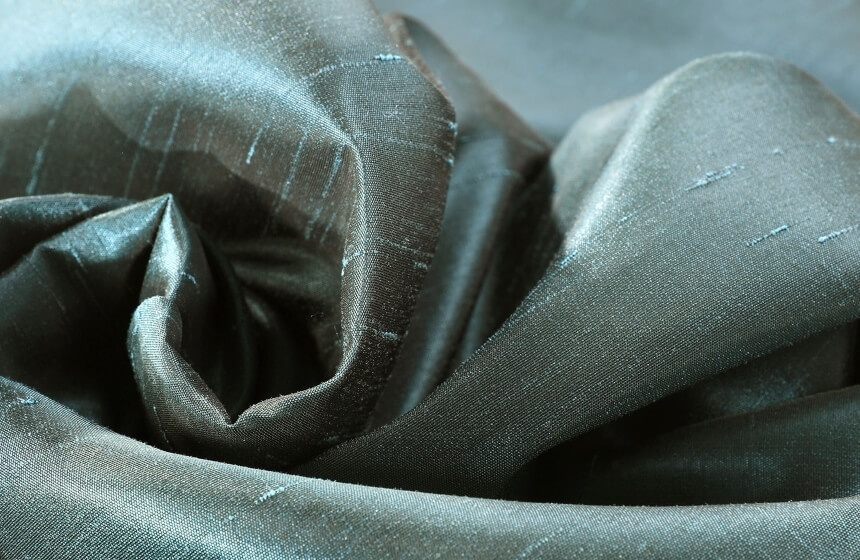
The other name for this kind of fabric is China silk. It features a glossy finish with a soft feel that makes it popular in lingerie production, making dresses and linings for garments, among other applications. It is a plain weave variation with its roots tracing back to Japan. It is easy to dye material, and this allows manufacturers to bring an assortment of colors to the market, making selection easier, especially for people working on large projects. The production has over the years moved from Japan to China.
Currently, most of the habotai silk common in kimono making comes from China. This fabric can be hand washed or dry cleaned. Both light and medium weight variants are available in stores.
Organza is one of the most delicate silk types that features the plain weave construction. This sheer, lightweight fabric is crisp and mostly used for making trims, fabric flowers, collars, and facings. It is used in the textile industry to make evening and bridal wear that require such delicate material. The mass of the fabric presents an array of problems for anyone using organza for a sewing project. It easily slips from under the presser foot, and it frays easily. One has to use the correct size of the needle to avoid damaging the fabric. Not all organza in the market is silk. Polyester and nylon imitations of the same are available, and they cost less than the silk fabric.
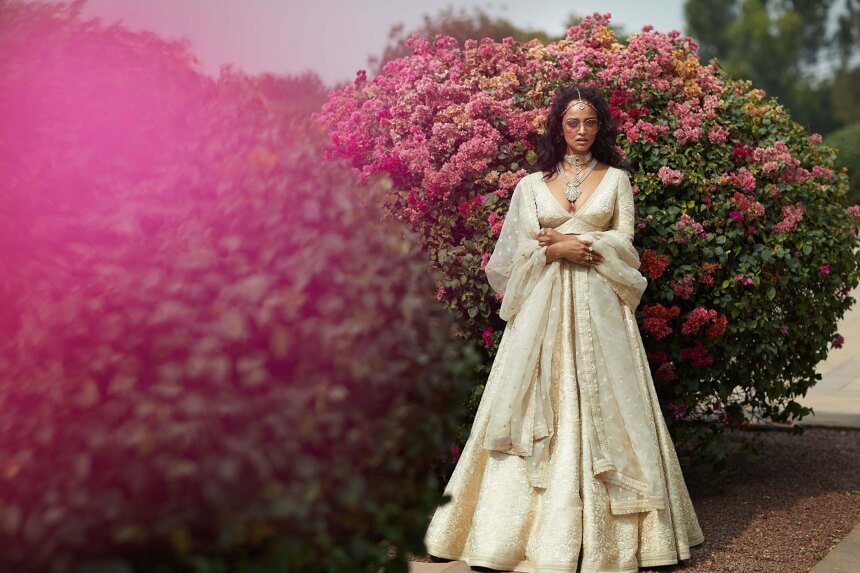
Noil is a relatively short fiber that is leftover from the process of spinning silk. It is also referred to as raw silk that has a faintly coarse texture as compared to the other types of this fabric that we discuss herein. Its origin is China and India. European countries have imported this alternative of the fabric since the 14th century. It was popular during this period, but the demand dipped as more silk alternatives made it to the market. In recent years, the production and use of noil have been revived, especially in India, as it’s a low budget substitute to the other types of silk that are costly to produce. India is the leading producer of this type of fabric that is good for household items and clothes.
Silk is a delicate fabric that requires the right care and maintenance. Sewing this material is hectic, and one has to ensure that the use of the correct needle size to avoid any damage to the fabric. The sewer should ensure that they buy the best sewing machine needles that come in various sizes. This will make sewing easier when working with silk as the appropriate size will be readily available. According to a decent number of reviews, the most versatile variation of silk is mulberry, as it is the finest alternative of all the options in the market. The user has to learn the ideal seams to use for this variation to get the intended results. Each type of silk fabric has desirable qualities that make them popular. The application dictates the best option for one to buy.